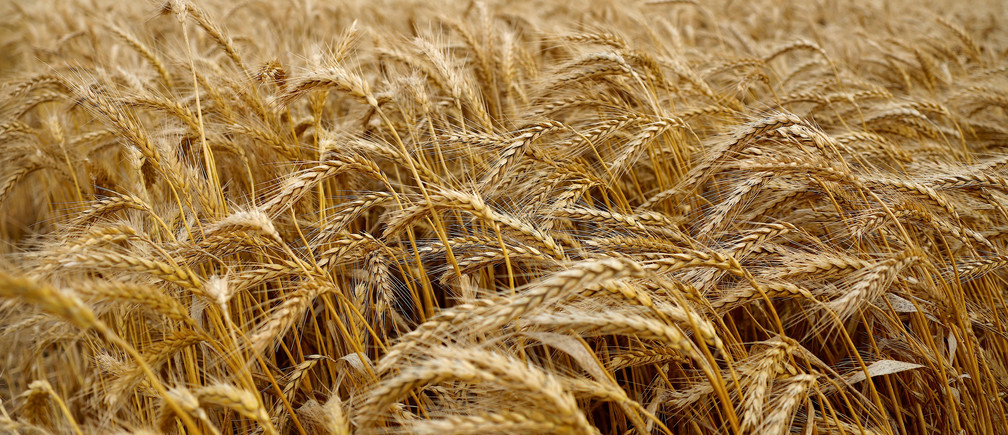In-Crop Chemicals

On-farm Stewardship Guide
The grower guide “Growing Australian Grain: Safely managing risks with crop inputs and grain on farm” is an on-farm stewardship guide designed to show compliance by growers with regulatory and market requirements for chemicals. It also outlines activities growers may conduct over and above regulatory requirements that may be considered.
The Guide covers all chemicals used during the on-farm activities including all those used pre-sowing and in-crop and any chemicals used during storage of harvested grain. There are a range of resources to review on a range of topics related to chemical use on-farm.
Refer to the Grain Producers Australia website for a copy of the Guide here
Understanding in-crop chemical use versus market risk
A range of fact sheets and information on the potential market access issues with using in-crop chemicals are available for industry use. Over time, these will be revised and updated where necessary and new material made available on relevant topics.
Much of this material is available on industry organisation or other websites. Some of the more common topics of relevance are listed below – for others search the named websites.
a) Desiccants
A Fact Sheet dealing with the application of herbicides late in the season to prevent weeds setting seed or to desiccate cereals, pulses and canola is available here
An Industry Advice Notice on this topic can be found here.
b) Flutriafol
Information on the potential residue carry-over risks when back-loading grain in trucks that previously carried treated fertiliser is located here
or
No.2 of 2017 “Potential Residue Contamination” located here
A procedure to appropriately clean trucks that have previously carried treated fertiliser is location on the Grain Trade Australia website as Technical Guideline Document No.18 “Truck Cleaning Procedures – Treated Fertiliser” is located here
c) Glyphosate
A range of information on glyphosate use either pre-sowing or as a desiccant is available on a number of websites including:
The NWPGP Working Group dealing with a range of glyphosate issues on barley has now completed its work. The most recent summary version of its activities can be found here.
d) Imazapyr
Various Industry Organisations have developed a number of Fact Sheets and Updates on the registration status of Imidazolinone (IMI) chemicals in various markets. These can be found below:
Industry Update on Market Access for IMI tolerant barley varieties 29Mar19
IMI Tolerant Barley Release 30May19
Reminder on Market Requirement for IMI tolerant barley 14th October 2019
IMI Tolerant Barley update April 2020
e) General In-Crop Chemical Usage
For a paper on the market implications of growers using in-crop chemicals, click here
For advice to growers on how to manage market risks when using in-crop chemicals, click here
For a Fact Sheet on grain marketing and managing pesticide residues click here
For a Fact Sheet on haloxyfop use on canola click here
Industry Consultation Documents & Agreements
The NWPGP consults with a range of grain industry sectors to understand their requirements in relation to chemical use (including MRLs). Where necessary, the outcome has been the development of various documents that outline those sector requirements and strategies to be implemented to ensure those sector needs can continue to be met in the future.
While these documents are an attempt to outline management strategies that all industry will implement, they are not legally binding. It is hoped that through communication and extension activities all stakeholders understand the benefits of these documents and continue to fulfil their obligations to meet customer requirements. Hence it is expected that in the main, these documents are followed by all stakeholders.
As required, these documents are updated and new ones will be developed over time.
a) MBIBTC / NWPGP evaluation of a new chemical on Malting Barley
The NWPGP and Barley Australia [via Malting and Brewing Industry Barley Technical Committee (MBIBTC)] have an Agreement to consider the potential impacts on malting barley of any new chemical to be registered in Australia. This Agreement has been in operation for several years and ensures that any new chemistry is firstly reviewed for its impact on quality (and subsequent market access) before being permitted for use on malting barley.
The Agreement is recommended to be used by all chemical registrants as early as possible in the process of developing the data package of that chemical for submission to the APVMA for registration and thus use on malting barley:
An overview of the process can be found here
Data requirements for evaluation under this process can be found here
For further information on the MBIBTC, click here
b) Guideline for Notification of release of Herbicide Tolerant Varieties
The NWPGP and Australian Seed Federation have a Guideline Agreement to consider the potential chemical residue impact of the intended release of a herbicide tolerant variety in Australia. The Guideline is designated as "Australian Grain Industry Guidelines for Notification of Release of non-GM Herbicide Tolerant Varieties". It has the imprimatur of Australian Crop Breeders, CropLife Australia, GrainGrowers and Grain Producers Australia.
The Guidelines are designed to identify and if possible develop solutions to any MRL issues before that variety is released. It suggests a process for information sharing when these varieties are proposed to be released into the Australian grain industry. By using those Notification Guidelines, and developing appropriate solutions, international trade in these grains should continue and not be unnecessarily disrupted due to unmanageable chemical residues. Hence market access is supported.
The Guideline is recommended to be used by all developers of herbicide tolerant varieties (and other applicable stakeholders) as early as possible in the process of developing that variety.
Overview of the process and the actual Agreement here
Examples of scenarios that may arise when a variety is to be released here
A Q&A Fact Sheet of common questions on the Agreement here
The Notification form to be completed to advise of the impending release of a variety here















